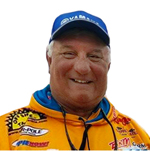
PUBLISHER
Dan Dannenmueller
EDITOR/ SR. WRITER
Ron Presley
CREATIVE DIRECTOR
Matt Mullikin
WRITERS
Keith “Catfish” Sutton
Jeff Samsel
GUEST WRITERS
Richard Simms
Terry Madewell
Brent Frazee
Anietra Hamper
John N. Felsher
Brad Wiegmann
Debbie Hanson
ADVERTISING SALES
Phone: 334-285-1623
Email: info@catfishnow.com
Copyright © 2022 CatfishNow Online Magazine. A KMS, Inc. Company. All rights reserved. Reproduction in whole or in part without permission is prohibited.
Cover Photo Credit
The Alabama River is an overlooked destination for flatheads. Jay Gallop caught this nice specimen on the river near Wetumpka Alabama on fresh live shad. (Terry Madewell Photo)
Seasonal Patterns Have Phases
Just as each season of the year has its own characteristics so do the different timetables within each season. They all have phases – beginning, middle, and end. Understanding seasonal patterns will help you decide on how and where to fish in a given waterway or lake.
The Beginning: September to Mid-October
The early part of the fall phase is the transition from hot, humid days and nights, to the first cool fronts. Stronger cooler air pushes with more wind and bright sunny days as the days click away into October. Just like we humans, the fish recognize dropping water temperatures which make them feel more energized from the cooling temperatures and wind action on the water. The food sources for the fish are also more energized and the predators have more oxygen freeing them up to chase this food. There are several keys to success during this beginning phase.
- Pay attention to water surface temps. Drops from the 80s to the 70s signal the fish to get moving. By late October, temps should be in the upper 60s to low seventies depending on the area of the country you live in. This can happen quicker and earlier north of the Mason Dixon line and later below it.
- The 60s are the bomb. That is the predators’ favorite temps.
- The fish will follow and stay close to the shad and food base. Watch for schools of shad and minnows on the surface or on your electronics.
- Fish ditches that lead from the summer haunts to shallow flats.
- All techniques will work as the temperatures reach into the 60s.
The Middle: Late October to Mid-November
This can be the best fishing time of the year. Flexibility is the key. The following are “best” practices:
- Again, watch surface temps. The Mid 60s to 50s will become more prominent. The cool fronts become stronger and stronger with more wind and colder temperatures at times.
- Pay careful attention to the bait fish balls and schools. As temps drop into the 50s, the fish will be stacked on ledges around food. Ledges can be shallow drops of even one foot. I like north and northwest wind-protected creeks and banks which protect the water more from the wind, waves, and cooler water temperatures.
- For crappie, this is a great time for casting, jigging, and spider rigging or live scoping.
- Fishing days before major fronts can be really awesome.
The End: Late November to the End of December
During this phase, fishing can be hit or miss depending on the weather. Here are a few tips:
- Look hard for the warmest water you can find during this phase. As water temps reach the 40s, fishing will slow a lot. Slow down your presentations and be patient.
- Fish deeper ledges on north, northwest banks, and creeks. Probably more near the mouths of the creeks in deeper water.
- Pay attention to the depth of the bait fish and fish under the bait fish’s depths.
- Fish towards the end of warming trends before major fronts arrive.
Final Thoughts
My fishing experience is reflected in the timetable depicted above. I caught some of my biggest crappie and catfish in the fall. Have fun, catch some for the skillet and always be safe by wearing life jackets if in a boat.

God Bless and Good Fishing!
Dan Dannenmueller, Publisher




